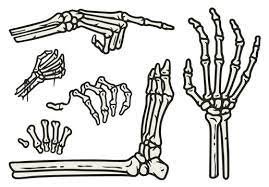Unlocking the Power of the Tip Screen: A Complete Guide for Businesses and Users

Introduction: What Exactly Is a Tip Screen?
If you’ve been to a coffee shop, salon, or food truck lately, you’ve probably encountered a tip screen. It’s that digital moment at the end of your transaction when the screen asks, “Would you like to leave a tip?” It may give options like 15%, 20%, 25%, or “No Tip.” This seemingly small screen has become a significant part of modern customer interaction, especially in the service industry.
Tip screens are part of point-of-sale (POS) systems that prompt customers to leave gratuities when making payments. They’ve gained popularity due to the widespread use of digital payments. But this little screen carries a lot of weight. It influences customer behavior, employee satisfaction, and even overall business revenue.
In this article, we’ll explore everything there is to know about tip screens—how they work, why they matter, and how businesses can use them ethically and effectively. Whether you’re a business owner looking to boost tips or a curious customer wondering how it all works, this guide is for you.
How Tip Screens Became the New Norm
Not too long ago, tipping was mostly reserved for restaurants and maybe cab drivers. But thanks to modern payment technology, tipping has expanded into nearly every service sector. From baristas to barbers, digital tip screens have changed the game.
The rise of mobile payment systems like Square, Toast, Clover, and others made it easier for small businesses to accept card payments. These systems also introduced customizable tip options, allowing businesses to prompt customers at checkout. That’s when tipping started becoming more widespread and visible.
Interestingly, the pandemic accelerated this shift. With contactless payments becoming the norm, tip screens offered a hygienic, no-contact way to offer gratuity. Plus, people started appreciating frontline and service workers more than ever. As a result, tipping became more common—even expected—in places it never was before.
But this shift didn’t come without controversy. Some consumers feel pressured by tip prompts, especially when they’re presented publicly or when the tipping expectation seems high. Still, most agree that tip screens are here to stay.
Why Tip Screens Matter for Businesses
1. They Can Boost Employee Morale
One of the most obvious benefits of tip screens is increased tipping, which can significantly boost the income of service workers. When tips are up, morale often follows. Employees who feel appreciated—both verbally and financially—tend to deliver better service, which can result in repeat business.
2. They Enhance the Customer Experience
Believe it or not, a well-placed tip screen can make the customer experience smoother. It gives people the chance to quickly show appreciation without fumbling for cash. And when set up properly, it feels like a natural part of the checkout process—not a sales gimmick.
3. They Help Small Businesses Stay Competitive
In a highly competitive marketplace, small businesses are always looking for ways to improve service and reward employees. Digital tip screens offer a way to do both without changing their core pricing. Customers feel good about supporting local staff, and the business gains a positive reputation for fairness.
That said, how a business implements the tip screen makes a huge difference. If it’s too pushy or intrusive, it can backfire. The key is subtlety and customer choice.
The Psychology Behind Tip Screen Choices
Tip screens may look simple, but they’re designed based on behavioral psychology. The order and presentation of tipping options can directly influence how much people tip—or if they tip at all.
1. Anchoring Effect
This is when the highest tipping option (say, 25%) makes the lower options seem more reasonable by comparison. If the screen shows 15%, 20%, and 25%, most people will choose 20%—even if they originally intended to leave 10%.
2. Social Pressure
Tip screens often face the customer, and sometimes even the employee can see it. This visibility creates social pressure to tip, especially when there’s a line behind you. No one wants to be the person who hits “No Tip” in front of a watching crowd.
3. Default Options
Some POS systems default to a middle-tier tip percentage. Unless the customer actively changes it, they’re likely to accept the default. This can significantly raise average tip amounts, especially when people are in a rush.
Understanding these psychological tactics helps consumers make more intentional choices and gives businesses insight into how to ethically design their tip screens.
Ethical Use of Tip Screens: Dos and Don’ts
Do: Be Transparent
Let customers know where the tips go. Are they shared among staff or do they go directly to the person serving them? Clarity builds trust.
Don’t: Make Tipping Mandatory
Tips should be optional. Forcing them through the system (e.g., no “No Tip” option) creates resentment and can damage customer loyalty.
Do: Keep the Design Simple and Non-Intrusive
A clean layout with clear tip amounts is best. Avoid overwhelming the customer with too many options or flashing animations.
Don’t: Manipulate with Guilt
Some businesses try to guilt-trip customers into tipping with sad emojis or messages like “Don’t you care about your server?” That’s a fast track to negative reviews and lost trust.
Ethical implementation means offering the opportunity to tip—not demanding it.
How to Optimize Tip Screen Settings for Better Results
1. Choose the Right Percentage Range
Stick with three or four tipping options (e.g., 10%, 15%, 20%, and custom). This gives enough variety without overwhelming the user.
2. Add a Custom Amount Button
Some customers prefer to tip a fixed amount rather than a percentage. Including this option makes your business look thoughtful and flexible.
3. Consider the Placement of the Tip Screen
If your system shows the tip screen before the transaction is completed, it may confuse customers. Ideally, it should come after the total is calculated but before the final confirmation.
4. Use Neutral Language
Instead of writing “Generous Tip” or “Stingy,” just list the numbers. Keep it professional and neutral to avoid pressuring your customers.
5. Train Your Staff
Make sure employees understand how the tip screen works and that they don’t comment on it while the customer is deciding. It’s important for the interaction to remain polite and pressure-free.
The Future of Tip Screens: What’s Next?
The future of tip screens is tied closely to evolving customer expectations and technological advances. Here’s what we might see next:
1. AI and Personalization
Some systems might soon use customer data to personalize tipping prompts. For example, if a user always tips 20%, the system might start suggesting that as the default.
2. Integration with Loyalty Programs
Imagine tipping through a screen and instantly earning points or perks for your favorite coffee shop. Integrating tipping with loyalty systems could incentivize more generous behavior.
3. Voice and Gesture Control
With the rise of contactless everything, future tip screens might include voice or hand gesture capabilities—making it even easier (and cleaner) to leave a tip without touching a thing.
As the technology gets smarter, businesses will need to be more mindful about how they implement these features. Transparency and respect for the customer’s choice will remain crucial.
Final Thoughts: The Tip Screen Is Here to Stay
Love them or hate them, tip screens have become an essential part of modern transactions. They simplify tipping, support service workers, and offer businesses a chance to engage customers in a new way.
But their effectiveness comes down to how they’re used. Ethical design, clear communication, and respect for the customer’s freedom to choose are key to making tip screens a win-win.
So the next time you’re faced with a tip screen, you’ll know that it’s more than just a simple “yes or no” moment. It’s a digital intersection of psychology, service, and culture—and now, you’re well-equipped to understand it.



